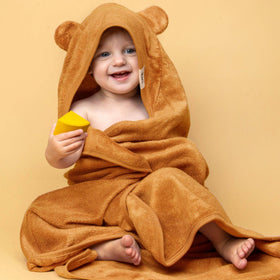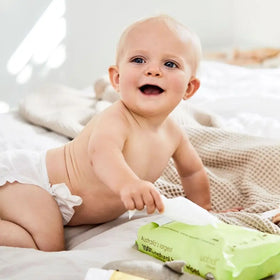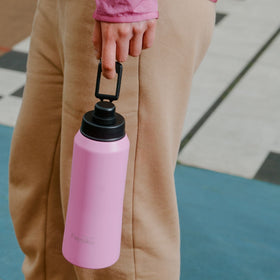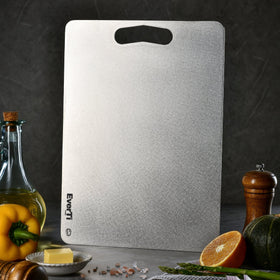
Essential Oils for Baby and How to Use them Safely
Here at Hello Charlie, we’re always warning about synthetic ingredients that can be harmful to you and to your baby. But did you know that natural products, used incorrectly, can be just as harmful? Before we stock anything, we check all the ingredients. If there’s anything that’s harmful, we won’t stock it. We recently started stocking Redmond Earthpaste, and while we’re stocking the peppermint and spearmint versions (and love them!), we’re not stocking the Wintergreen. This is because Wintergreen is a very powerful essential oil that’s toxic for babies and children, and for pregnant or breastfeeding women. It’s natural, but that doesn’t mean it’s good for everyone. Which leads us into a discussion about essential oils. Essential oils are a great way to add not just gorgeous natural scents to products, but have therapeutic properties, too, provided they are used correctly. And one of the ways you need to be careful with essential oils is when you’re using them with children.
Safe essential oil use with babies and children
First and foremost, essential oils are extremely powerful. Essential oils are concentrated hydrophobic liquids extracted from plants, generally by distillation but also by expression or solvent extraction. In their pure form, essential oils are very, very strong and some can be poisonous or cause an allergic reaction so it’s essential that essential oils are never ingested and never to be used without dilution with a carrier oil such as sweet almond oil.
Safe Essential Oil Dosages for Baby
- For your newborn, only one drop is required to two teaspoons of water in a diffuser, or in two tablespoons of oil for a massage.
- This can be increased taking into consideration the size and sensitivity of your baby to two or three drops between 3-24 months old.
- Even children over 2 years should still not exceed 2% of the recipe (i.e. 2% oil to 98% carrier oil, or water for diffusers).
What to look for with essential oils
- Look for essential oils that are organic therapeutic grade – or rather, avoid anything that is purely a fragrance oil. If the label specifies that it is not to use topically or internally, it is most likely a petro chemically diffused fragrance oil which has no healing properties.
Safety Tips for Using Essential Oils with Baby
- Remember to never use essential oils on or near your baby’s face
- In the interest of avoiding ingestion; be sure to avoid their squirmy little hands which will inevitably find their way to the mouth!
Safe Essential Oils for Newborns
At the newborn stage, the list of safe essential oils for your baby is very small. Lavender and Roman or German Chamomile are the most commonly used essential oils safe to use at this young age, both effective in calming and soothing your baby and as a sleep aid. One drop of Dill with a tablespoon of sweet almond oil rubbed in circular motions on baby’s tummy and back is a natural remedy for treating colic. Mandarin essential oil mixed with water makes a fragrant natural sanitiser for cleaning surfaces in your newborn baby’s room.

Essential oils for babies 2-6 months
It is safe to introduce eucalyptus radiata, neroli, tea tree, geranium and rose otto. Neroli essential oil has many healing properties, including mood enhancing, antiseptic, sedative and digestive properties. Neroli essential oil also disinfects and kills bacteria, helps boost the immune system by fighting common coughs, colds and mucus; and promotes the generation of new cells in growing children. Eucalyptus radiata is relatively gentle and non-irritating for children, effective at the first sign of coughs and colds. Geranium essential oil assists with bruising, crying, jaundice or thrush. Rose otto helps to soothe, stabilise and relax and heal rashes whilst tea tree with its antiseptic, antifungal and antibiotic properties helps to fight common colds, earaches, thrush and insect bites.
Essential oils for babies 7-12 months
At this age, your baby is introduced to many new things. She is likely being introduced to many new people, as well as many new foods. Palmarosa oil calms the mind and supports nervous exhaustion. Petitgrain essential oil is a natural anxiety remedy. Niaouli essential oil has antiseptic and antimicrobial properties. Tangerine essential oil has natural detoxifying benefits, and like Cardamom essential oil, both are digestive stimulants suitable for your baby.
Essential oils for toddlers 2-5 years
Your toddler is now fast growing up, interacting with other children more frequently and eager to learn. Essential oils of grapefruit, ravensara, ormensis and yarrow are natural remedies for supporting the immune system, with antiviral, antimicrobial and anti-inflammatory properties. Essential oil of ginger supports aching muscles and acts as a digestion aid, along with coriander essential oil. Helichrysum essential oil is an antifungal and anti-inflammatory – a great natural remedy for cell regeneration of active children. Thyme linalool is an anti-microbial, stimulating brain activity and aiding in memory and concentration of curious young minds.
References: There is a plethora of aromatherapy information on the web about what essential oils are safe for your baby, and the two trusted sources we refer to at Hello Charlie are the books Healthy Child by Valerie Ann Worwood and Aromatherapy: A Complete Guide to the Healing Art by Kathi Keville and Mindy Green. Valerie Ann Worwood is internationally acknowledged as one of the world’s leading aromatherapists, whilst Mindy Green and Kathy Keville have a combined 75 years of experience in botanical therapies.










